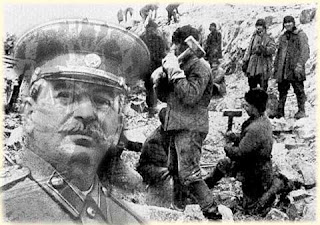Later in 2012 will mark the 50th anniversary of the publication of One Day in the Life of Ivan Denisovich by Alexander Solzhenitsyn. I recently reread the Thomas P. Whitney translation of this book that was published in 1962 by Fawcett Publications. However, I wish I had read the later version by Ralph Parker (E. P. Dutton, 1963) because it is a better translation.
I recommend this short novel since it is a seminal document in Soviet history as well as a “good read.” One Day is the first piece of Soviet literature to reveal the horrors of the Gulag (system of prison camps of the Stalin regime). Solzhenitsyn himself was a prisoner in the camps for eight years, beginning in 1945. After Stalin’s death, he was released but had to serve three more years in exile in Central Asia. He was rehabilitated in 1957. Solzhenitsyn then became a high school physics teacher while secretly working on the manuscript for One Day. He was considered a very good teacher by his students for presenting topics of physics in an interesting way.
One Day is fiction, but it is based on the author’s experiences in the Gulag. Solzhenitsyn submitted his manuscript to several Russian literary journals, and was at first rejected. Finally, the journal Novy Mir (translated as "New World") agreed to publish it, but government censors refused to allow that. In 1962, however, Soviet Premier Nikita Khrushchev personally intervened and called for the publication of One Day in the Life of Ivan Denisovich in Novy Mir. This intervention is sometimes compared to Khrushchev’s 1956 denunciation of Stalin at the 22nd Congress of the Communist Party of the Soviet Union in a speech in which he talked of Stalin’s abuse of power and cult of personality.
The New American Library edition (2008) of One Day has a useful Introduction by the Russian poet Yevgeny Yevtushenko and a less scholarly Afterward by Eric Bogosian, the American actor and novelist. Bogosian’s contribution should have been edited since he said that One Day was first published in 1961 instead of 1962, which is the year given in the Introduction. And he implied that the Gulag was all in Siberia, yet parts of the Gulag were in European Russia as well, in the north.
Why is One Day a great work of fiction? Though it follows one character during just one day, this character and that day represent all the prisoners in the Gulag and the total experience of those who lived and/or died from the late 1930s through the mid 1950s. Some 1 million people were released from the Gulag in the 1950s. However, forced labor camps and political prisoners still existed in the Soviet Union until the Gorbachev era.
Display Comments Add a Comment





Welcome back! Nice article. It is quite informative and sounds as though it gives an interesting picture of that era in the Soviet Union. Keep up the good work!